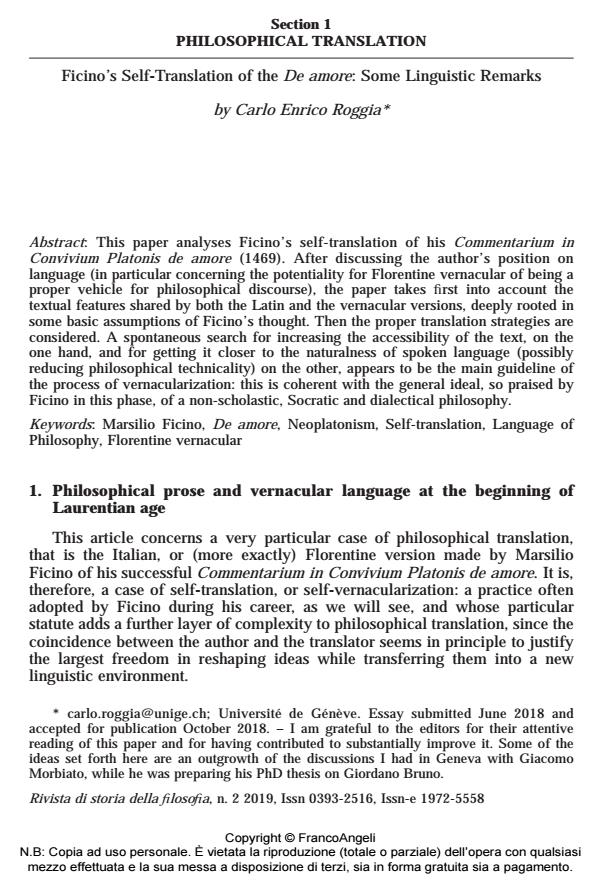Ficino’s Self-Translation of the De amore: Some Linguistic Remarks
Titolo Rivista RIVISTA DI STORIA DELLA FILOSOFIA
Autori/Curatori Carlo Enrico Roggia
Anno di pubblicazione 2019 Fascicolo 2019/2
Lingua Inglese Numero pagine 19 P. 193-211 Dimensione file 81 KB
DOI 10.3280/SF2019-002002
Il DOI è il codice a barre della proprietà intellettuale: per saperne di più
clicca qui
Qui sotto puoi vedere in anteprima la prima pagina di questo articolo.
Se questo articolo ti interessa, lo puoi acquistare (e scaricare in formato pdf) seguendo le facili indicazioni per acquistare il download credit. Acquista Download Credits per scaricare questo Articolo in formato PDF

FrancoAngeli è membro della Publishers International Linking Association, Inc (PILA)associazione indipendente e non profit per facilitare (attraverso i servizi tecnologici implementati da CrossRef.org) l’accesso degli studiosi ai contenuti digitali nelle pubblicazioni professionali e scientifiche
This paper analyses Ficino’s self-translation of his Commentarium in Convivium Platonis de amore (1469). After discussing the author’s position on language (in particular concerning the potentiality for Florentine vernacular of being a proper vehicle for philosophical discourse), the paper takes first into account the textual features shared by both the Latin and the vernacular versions, deeply rooted in some basic assumptions of Ficino’s thought. Then the proper translation strategies are considered. A spontaneous search for increasing the accessibility of the text, on the one hand, and for getting it closer to the naturalness of spoken language (possibly reducing philosophical technicality) on the other, appears to be the main guideline of the process of vernacularization: this is coherent with the general ideal, so praised by Ficino in this phase, of a non-scholastic, Socratic and dialectical philosophy.
Parole chiave:Marsilio Ficino, De amore, Neoplatonism, Self-translation, Language of Philosophy, Florentine vernacular
- Dante and the Sciences of the Human Eva Del Soldato, pp.191 (ISBN:978-3-031-69252-9)
Carlo Enrico Roggia, Ficino’s Self-Translation of the De amore: Some Linguistic Remarks in "RIVISTA DI STORIA DELLA FILOSOFIA" 2/2019, pp 193-211, DOI: 10.3280/SF2019-002002